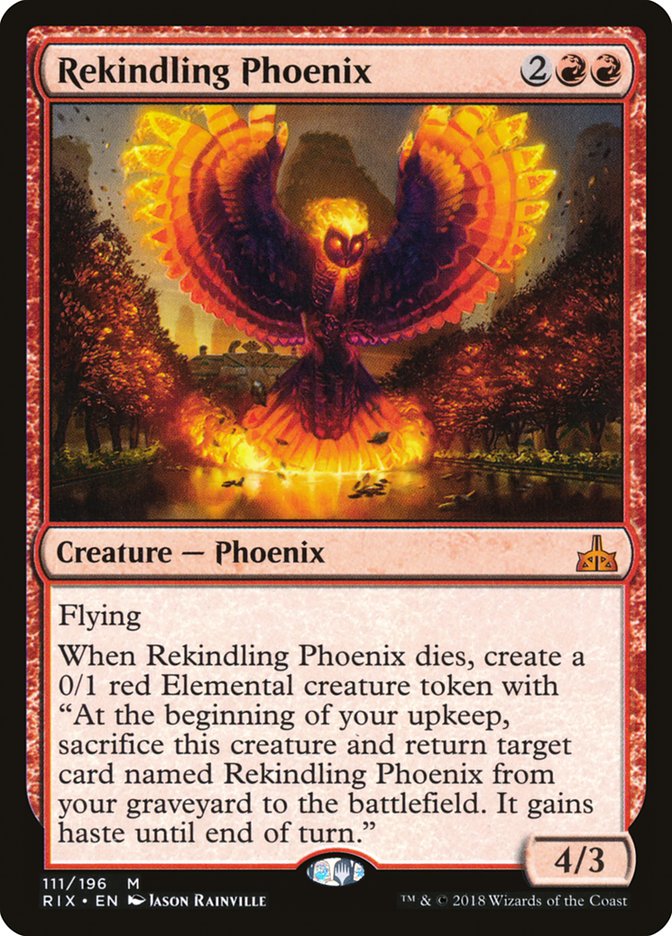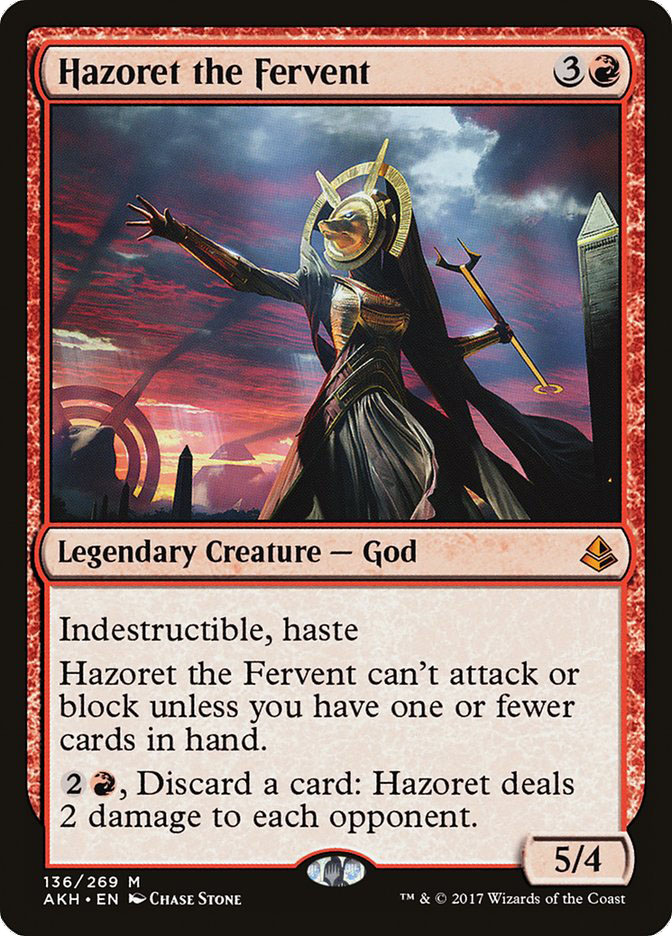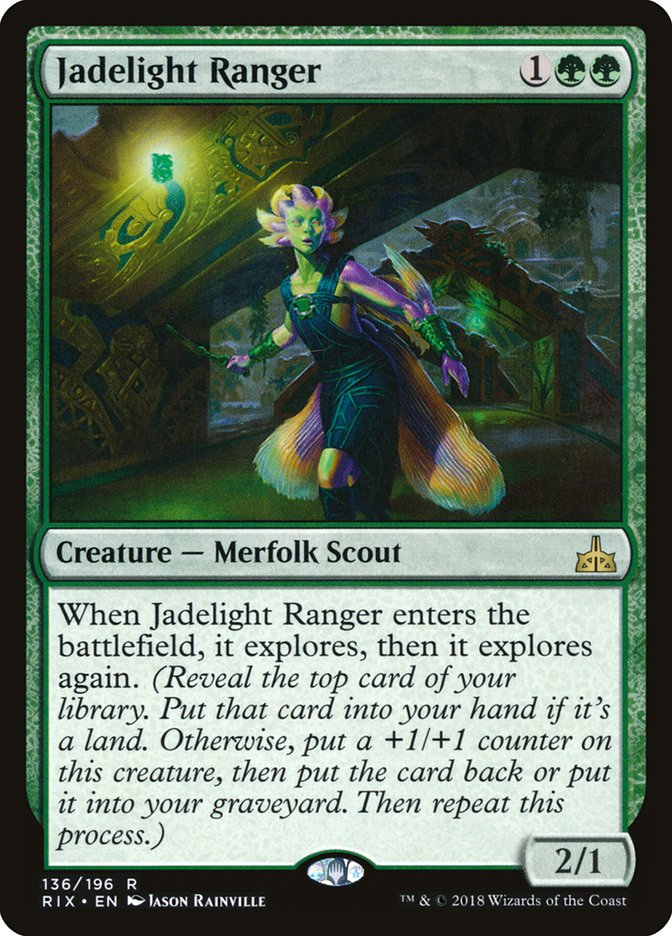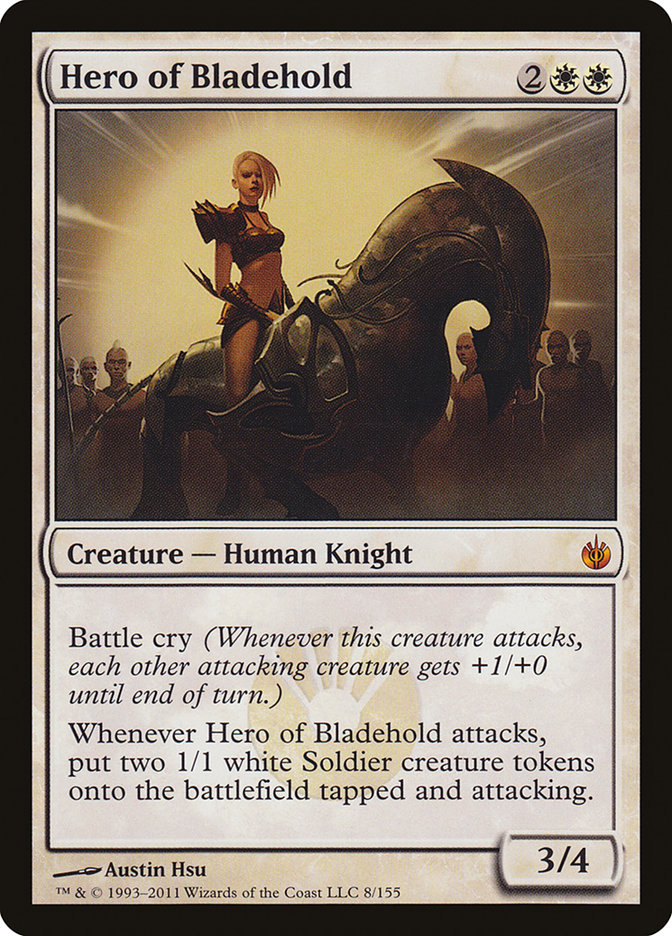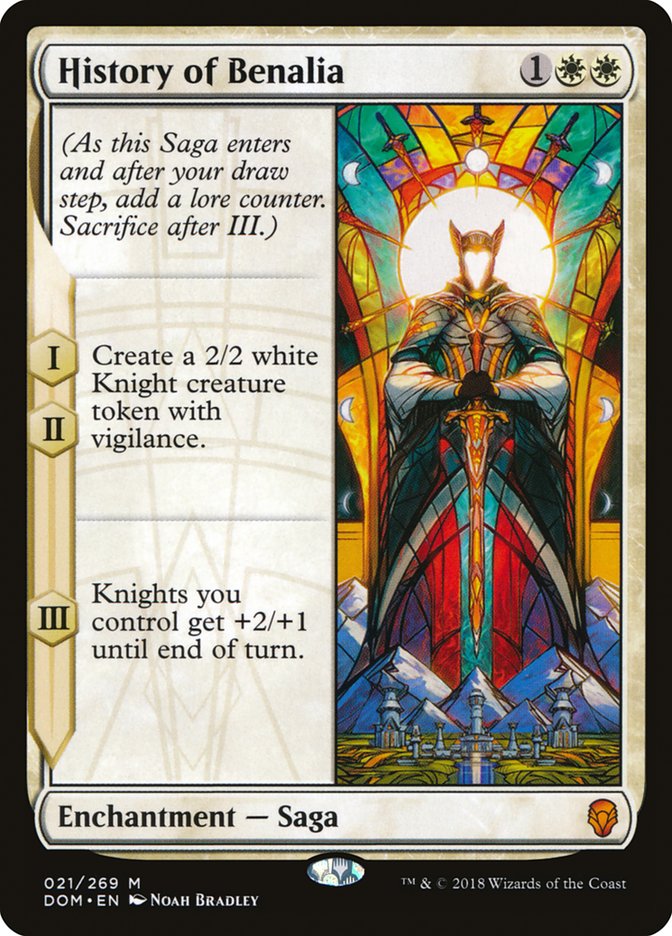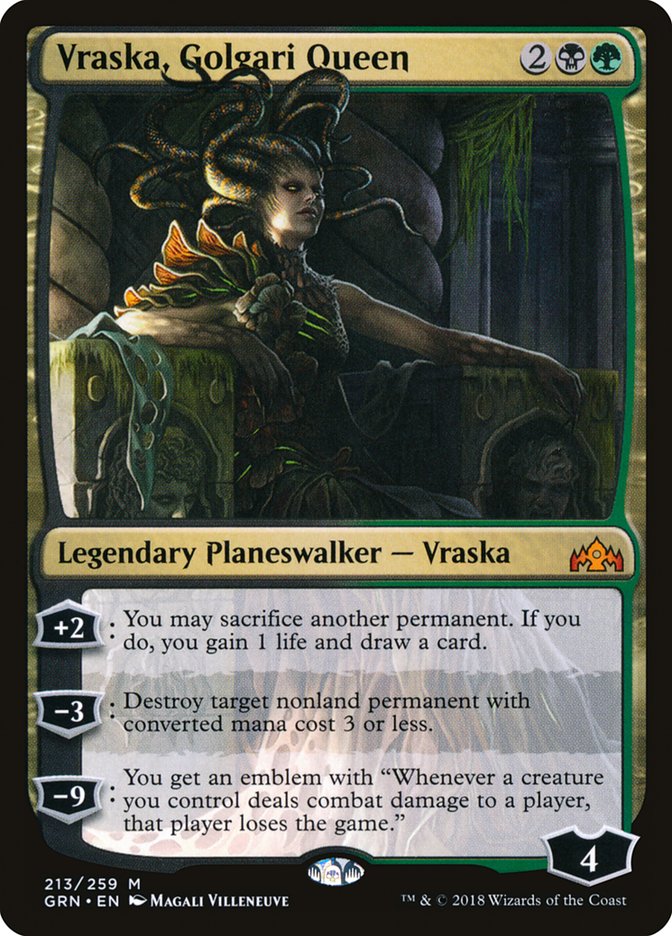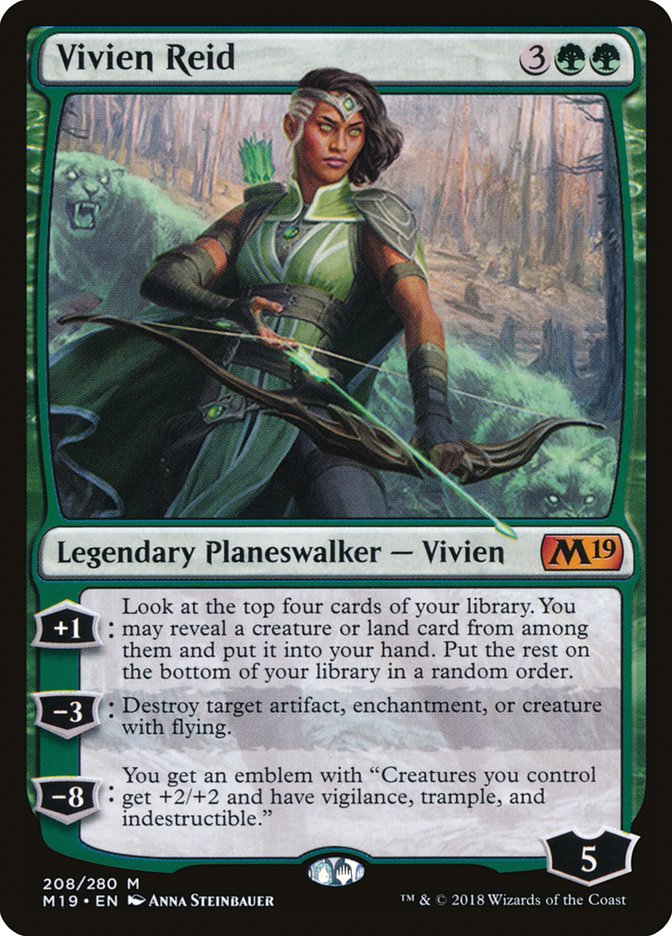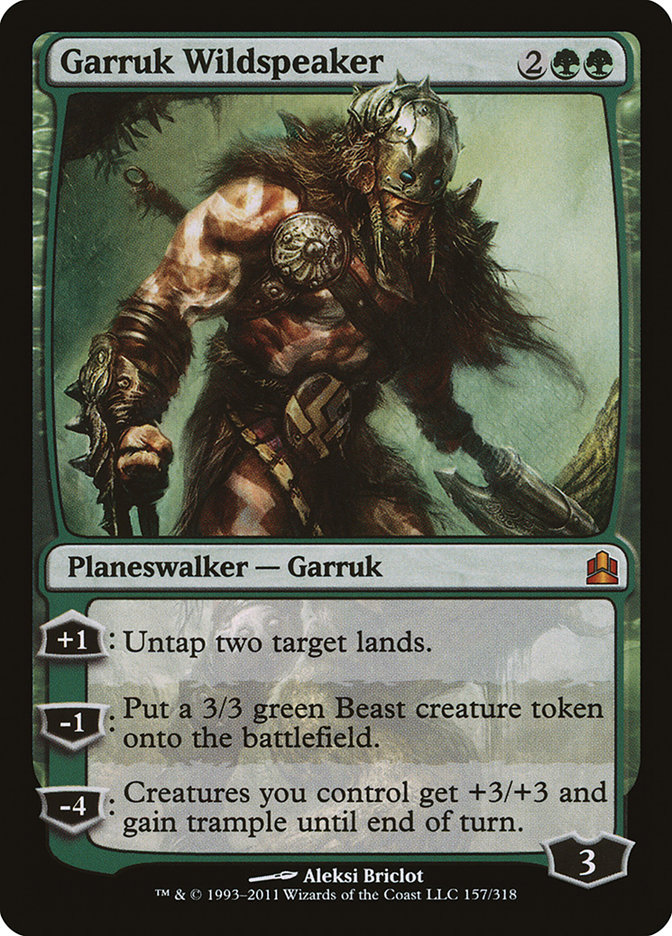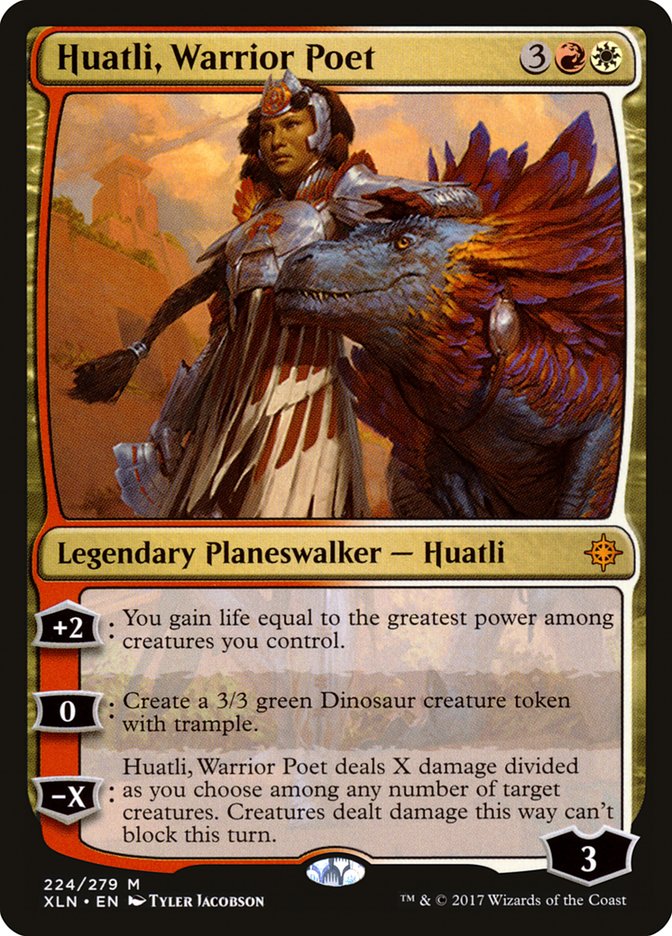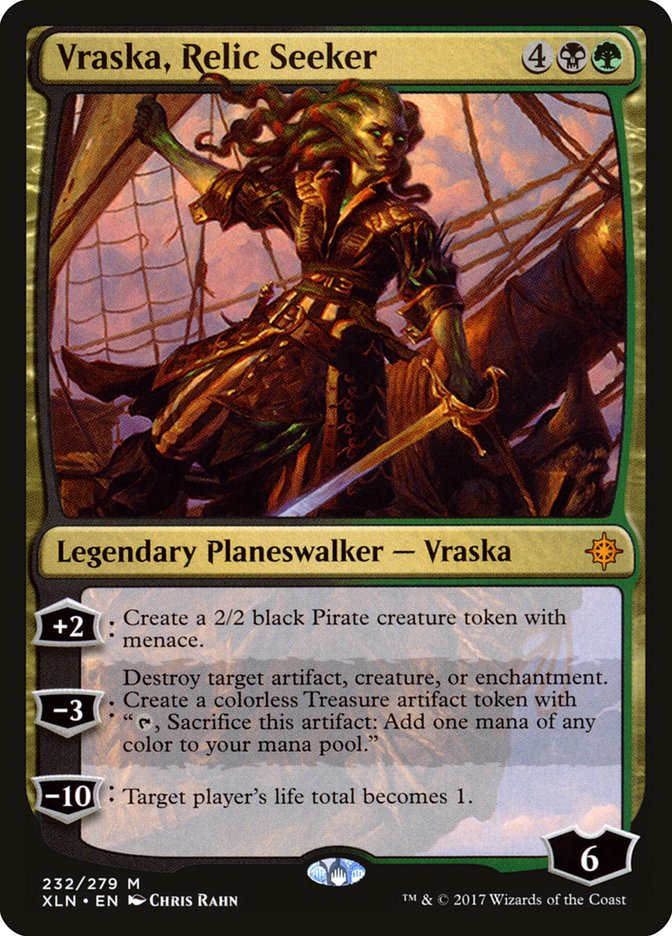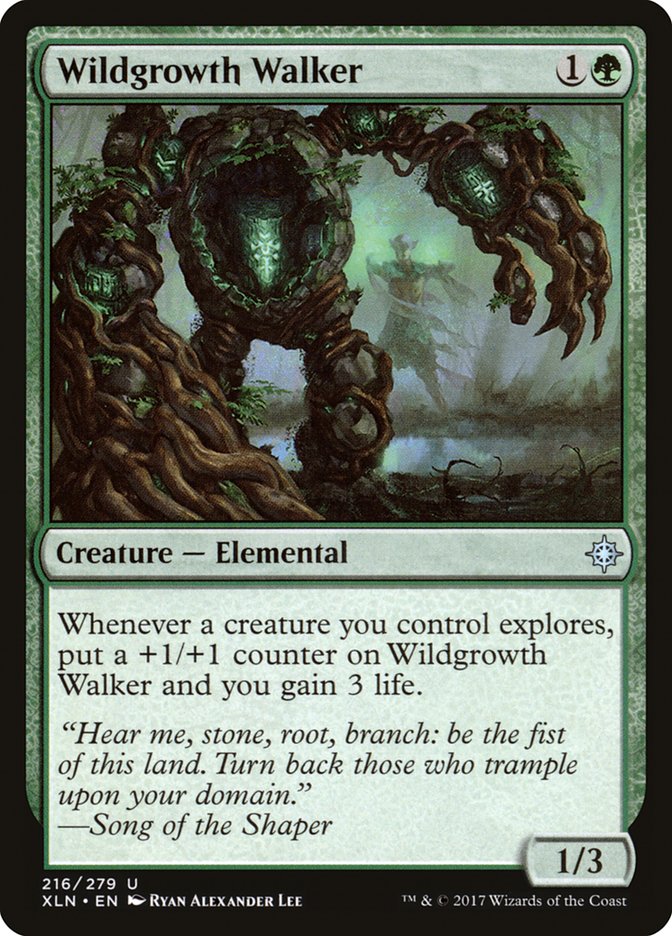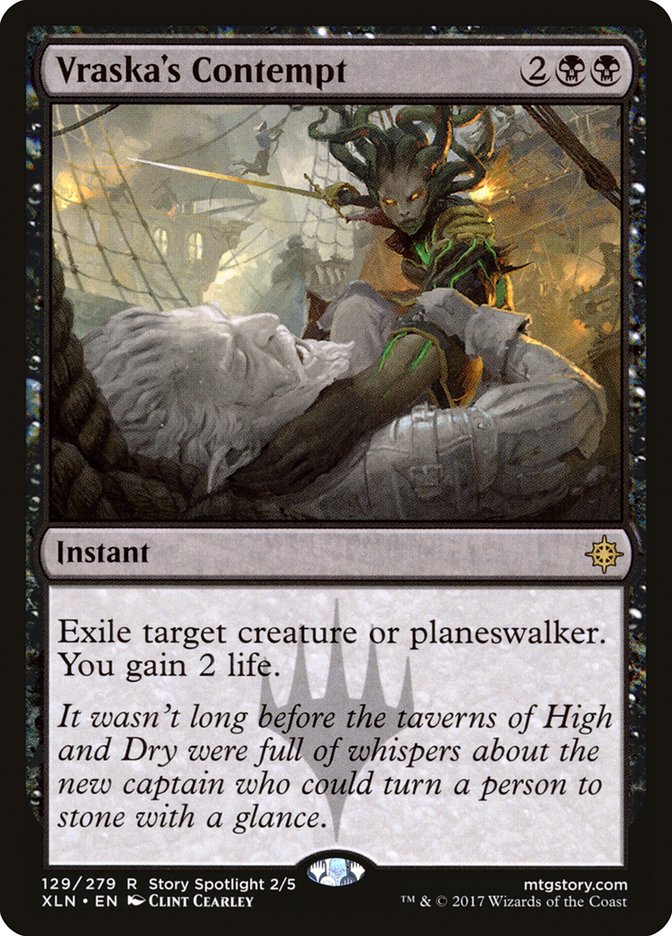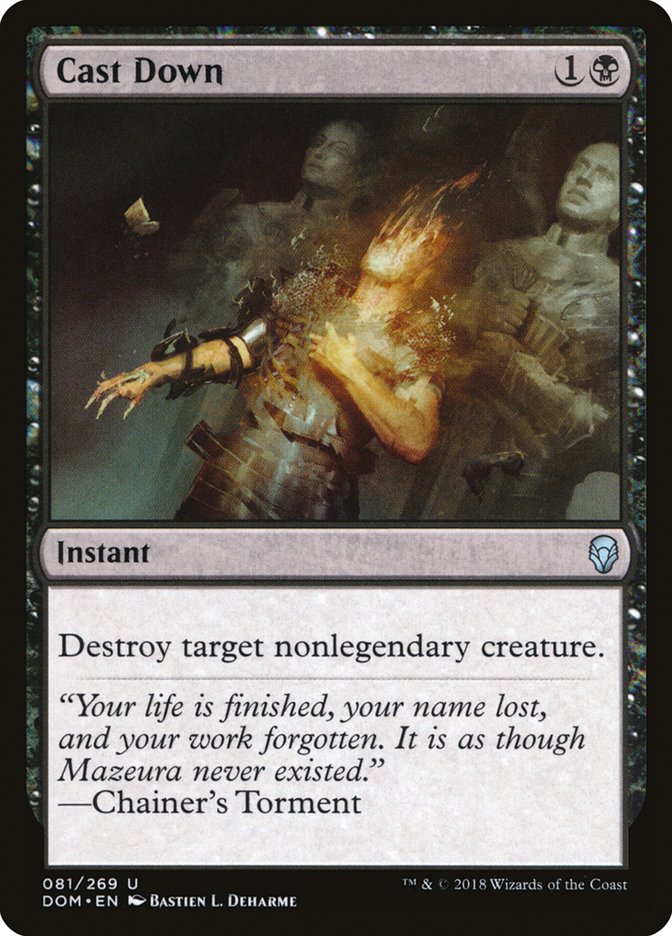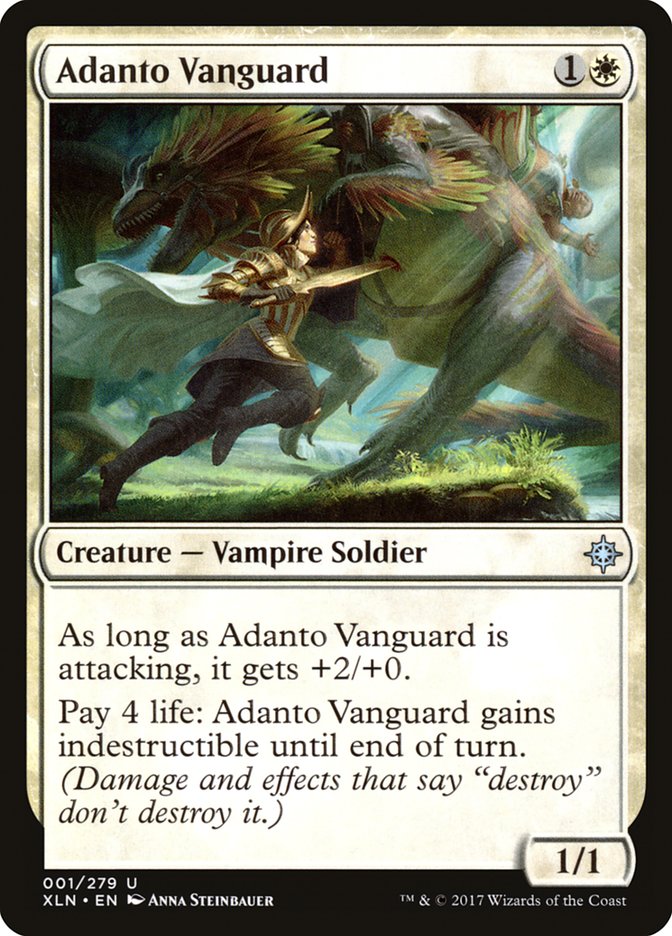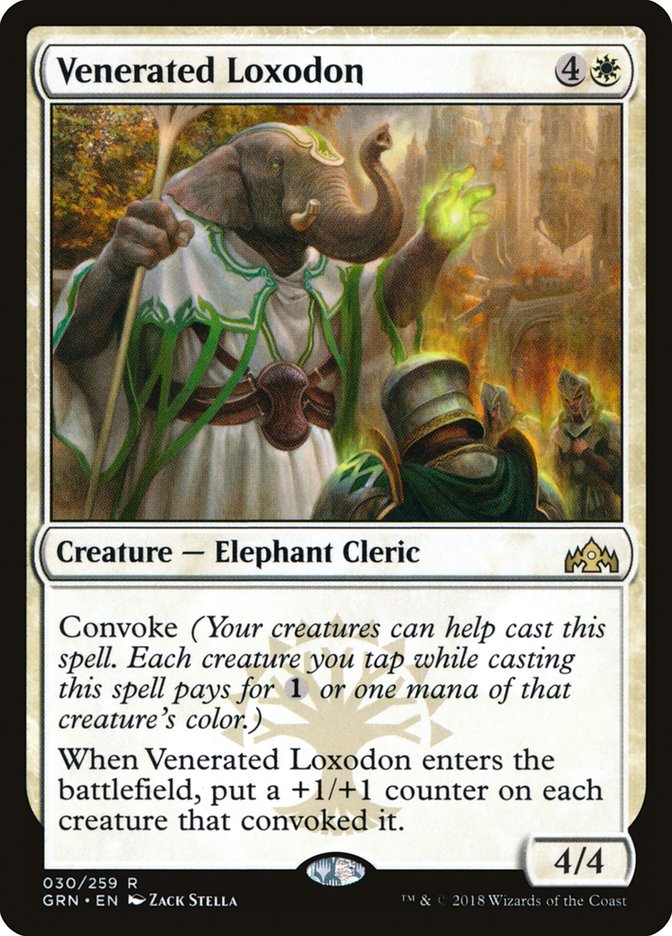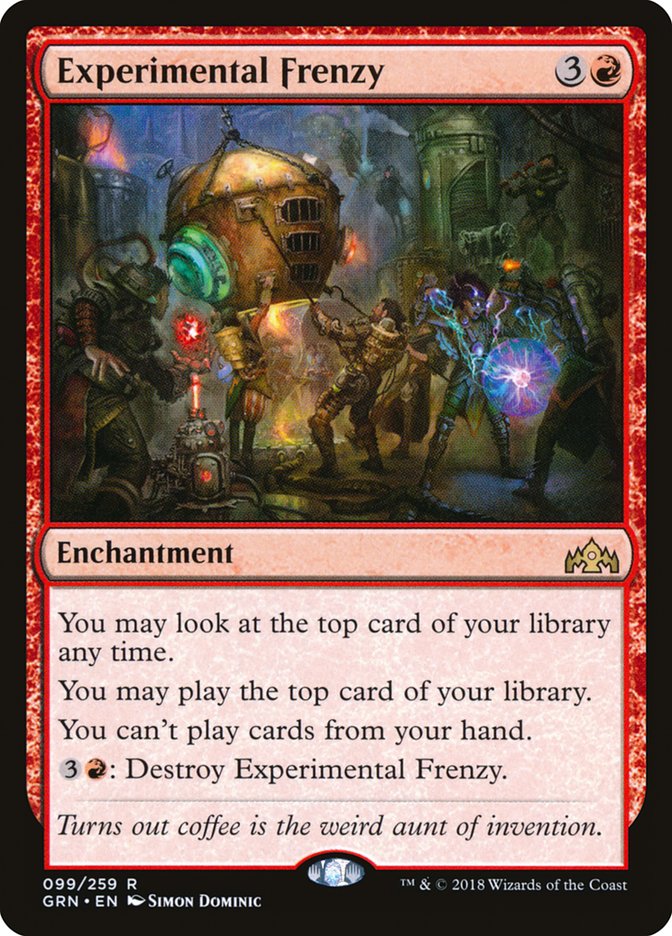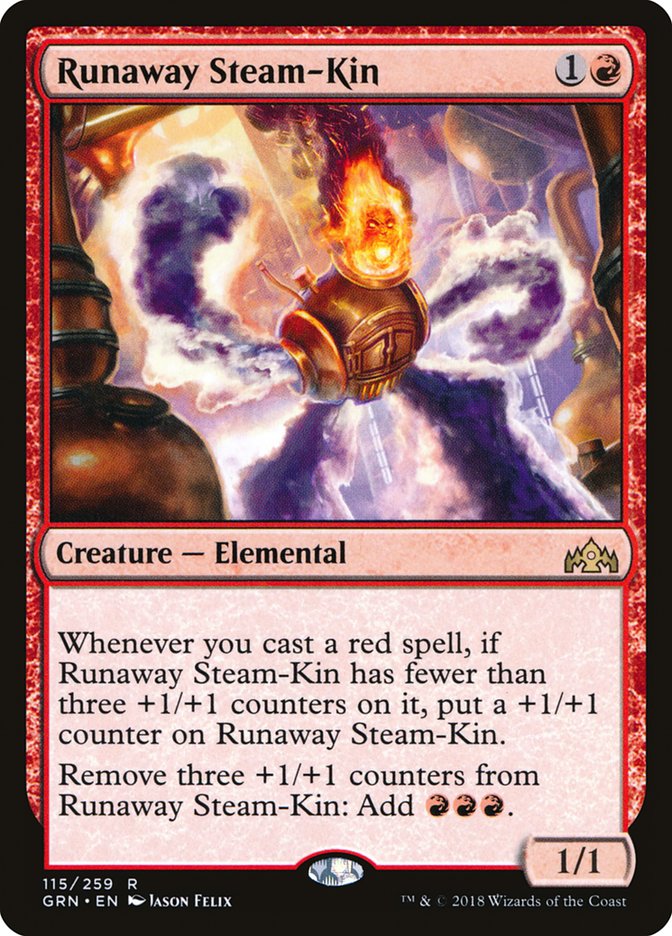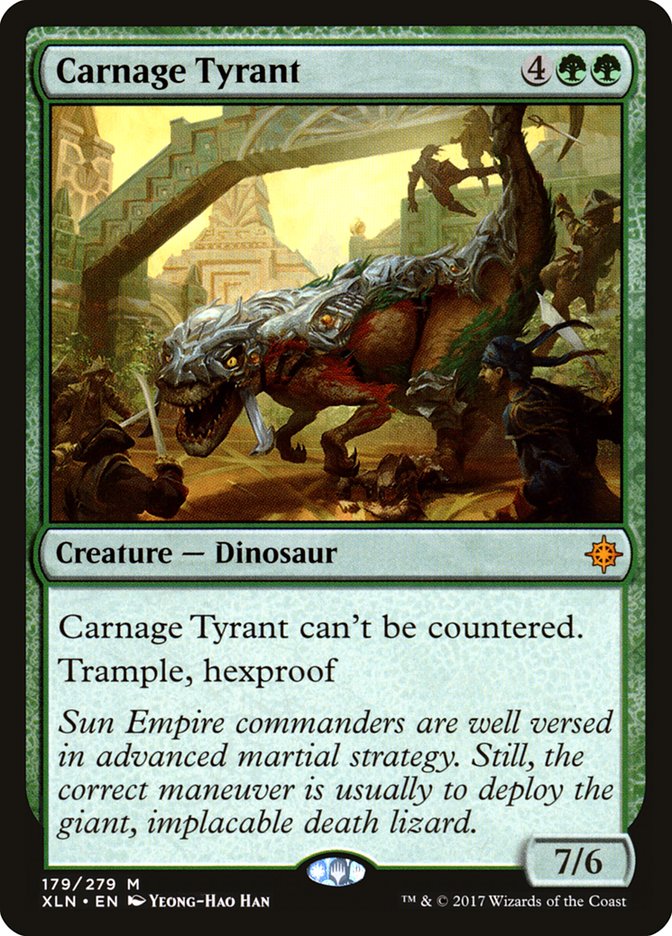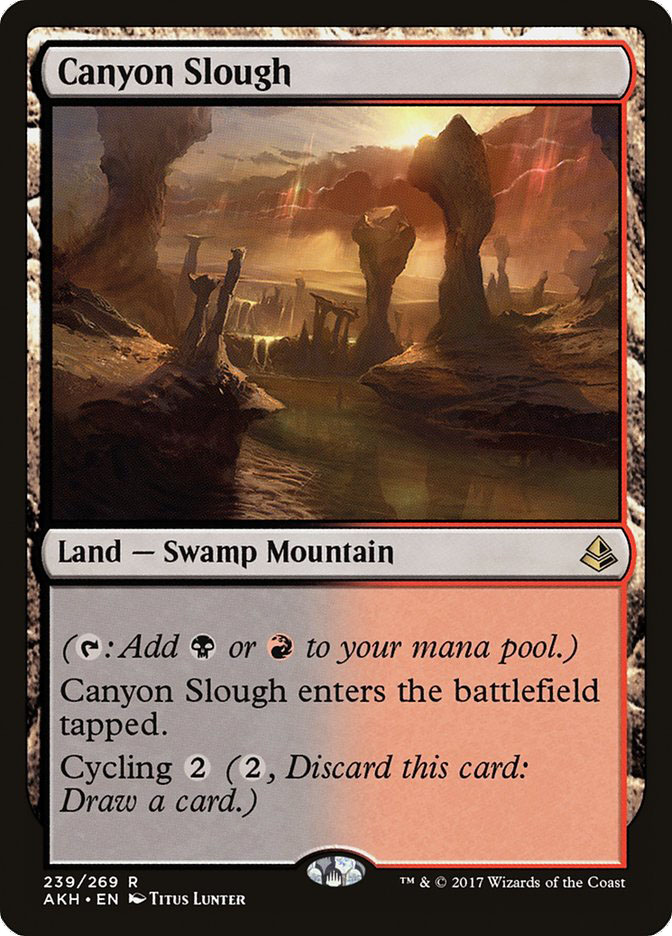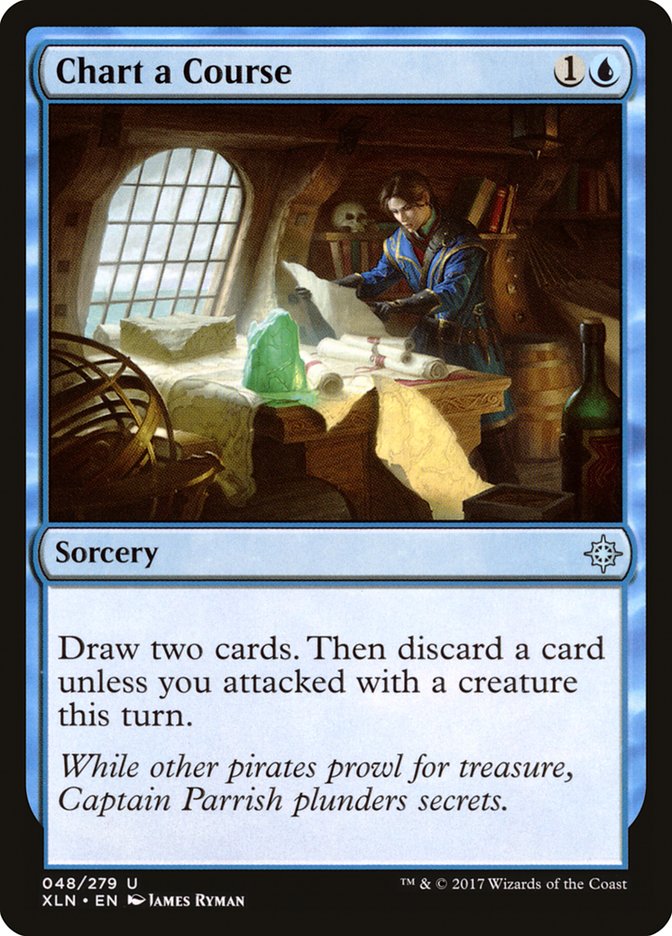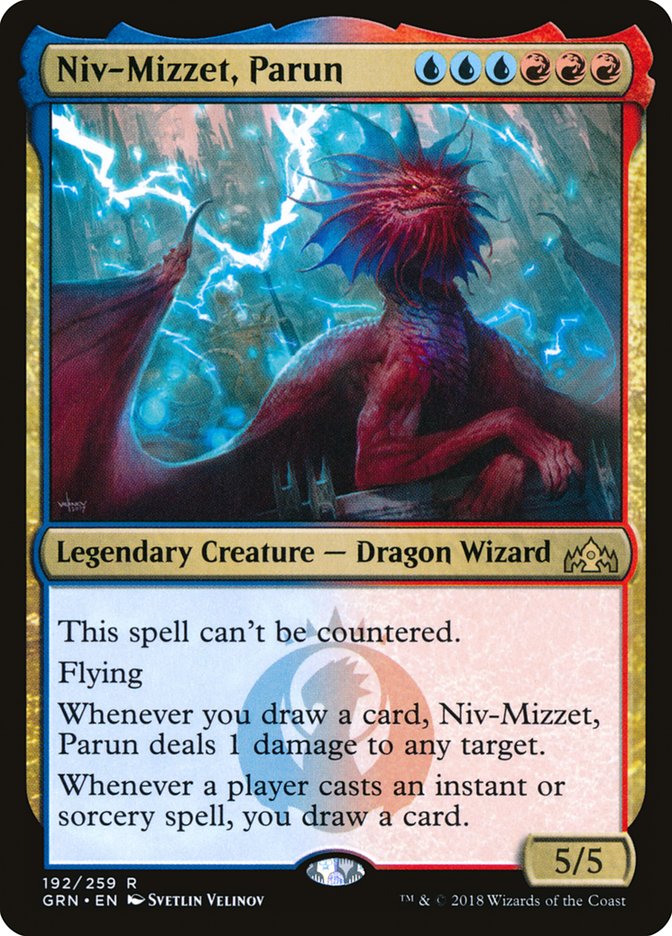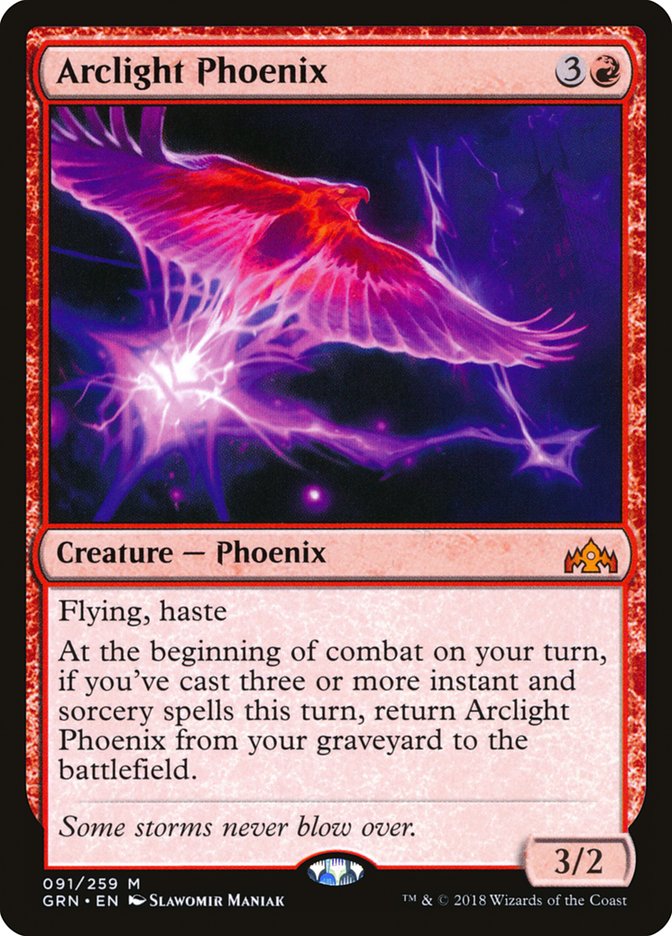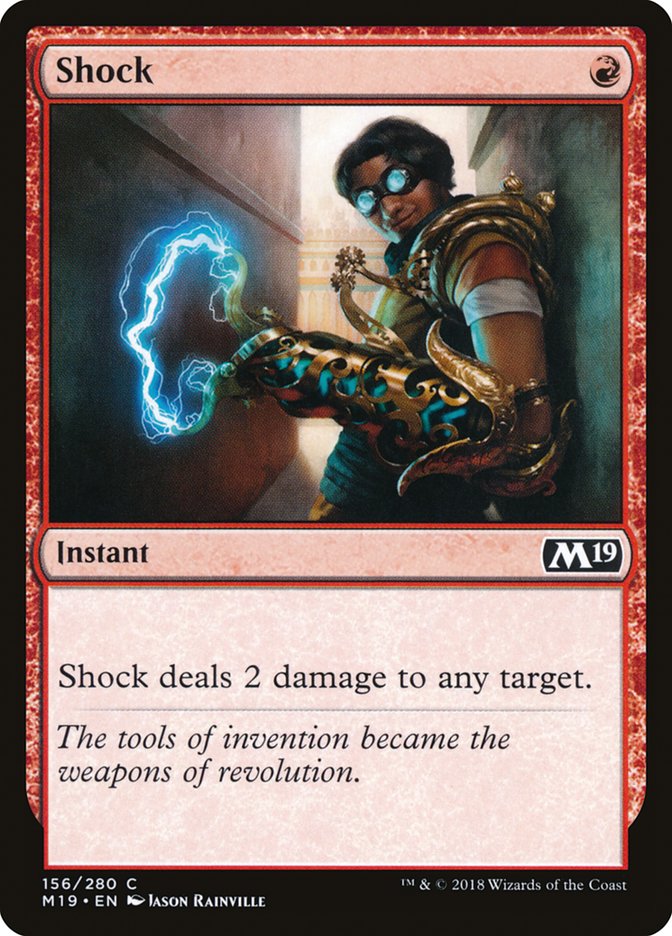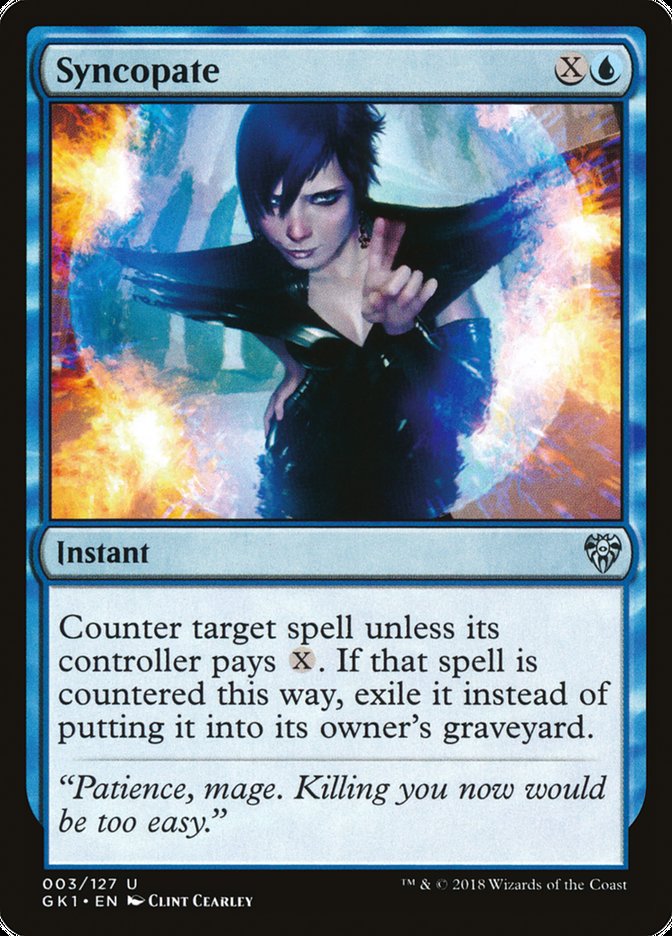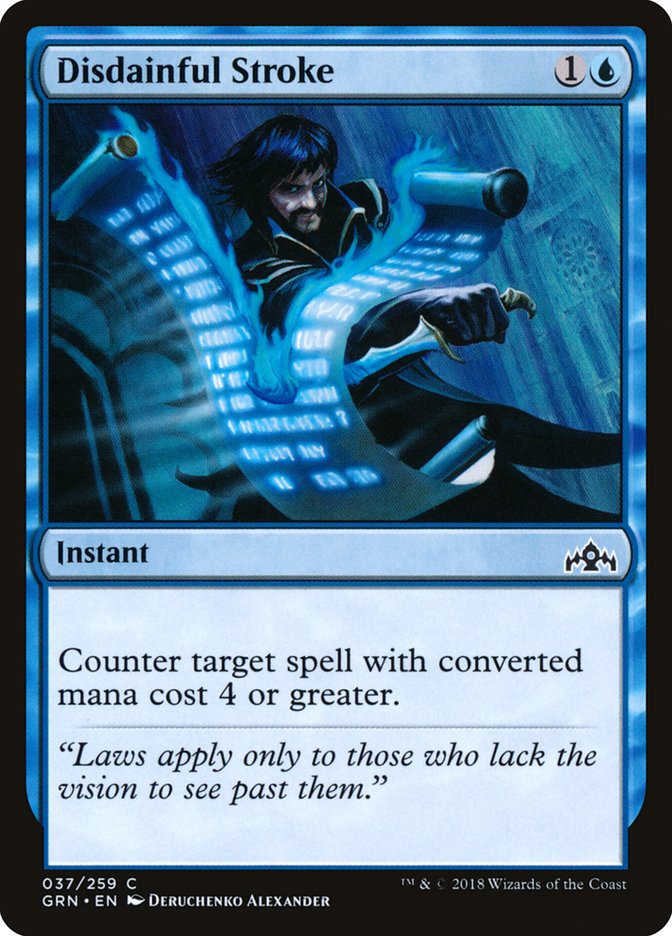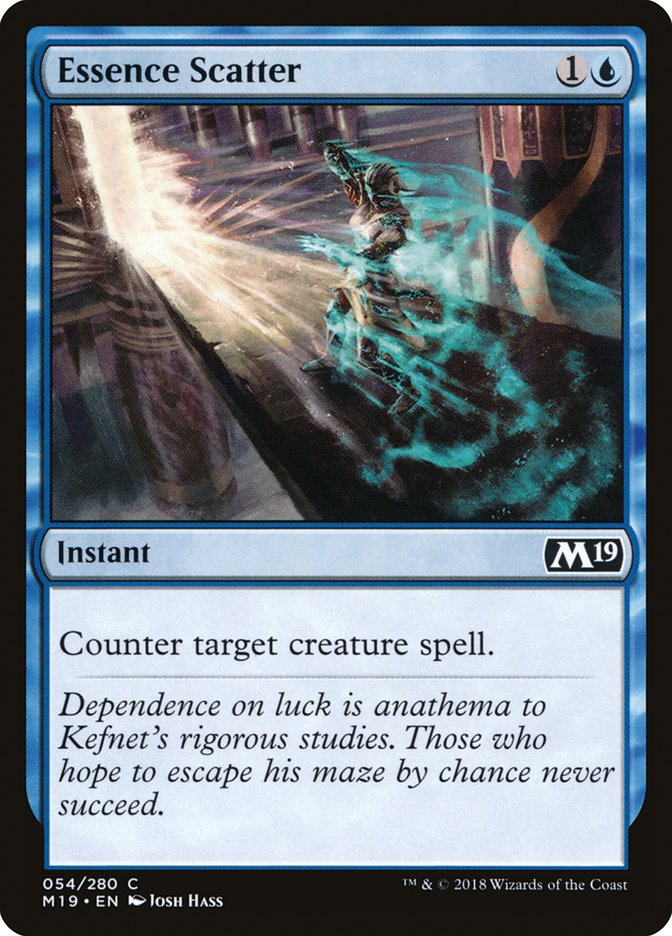Midrange, as we have known it for the last few years, is just not good in Guilds of Ravnica Standard. It’s a trap with a ton of issues.
Except this deck, despite its label as Jeskai Control. Decklist credit is
due to my Pro Tour teammate Zach Allen, who finished 13th in Atlanta with
approximately this list.
Creatures (7)
Planeswalkers (4)
Lands (25)
Spells (24)

This might sound like a hot take after such a strong performance by Golgari
Midrange last weekend, but I love to explain things. Let’s answer why
midrange is bad to show how Jeskai Control solves the problem.
Problem 1: Cascading Threats
We have spent quite a few years in Standard formats that orbit a world
where midrange is the best strategy. Looking at a lot of Guilds of Ravnica Standard you would assume its the same. The best
cards all cost four to six mana. A bunch of them are rares and mythics with
a lot of text. There isn’t a busted combo deck, the aggro decks are
relatively beatable or midrange in disguise, like Mono-Red Aggro being the
same deck as Big Red with one-drops instead of five-drops.
But the threats today aren’t the same as the old ones. Rekindling Phoenix
is way more a Hazoret the Fervent than a Glorybringer. If you clean up the
threat you don’t end up already dead on cardboard balance. The same goes
for Carnage Tyrant.
The value and go wide threats are capped. You go up a card regardless, not
whatever abomination of instant advantage and continuing card flow Tireless
Tracker was.
The basic planeswalkers don’t proactively play to the battlefield. The big
punish for this is that you can’t just run them out into Teferi, Hero of
Dominaria and not just get -3’ed. The lesser punish is that planeswalkers
are almost a win more tool. If you aren’t ahead on the battlefield,
planeswalkers are vulnerable to a creature removal spell putting you on the
back foot. They end up as expensive Divinations or removal spells that
force your opponent to attack and play a specific spell.
Some classic planeswalkers exist, but they are prohibitive in cost, color
requirements, scale, or honestly all of the above.
But the threats are still good, so why does this matter? The core play
pattern of midrange is that you are condemning yourself to a lot of single
spell turns in the mid-game, and you need those single spells to let you
play from behind. They need to provide value in those spots that matters.
These threats don’t. Midrange in this format has to lean on reactive spells
when behind, like Finality, or hope its threats are just perfectly
positioned and opponents can’t answer then, like Aurelia, Exemplar of
Justice was for about one day at Grand Prix New Jersey. The reactive spell
can backfire if your opponent just draws their good cards or isn’t soft to
them, the same way the non-universal proactive cards can be taken down
easily by the right cards.
This is where Golgari Midrange gets the one midrange edge it has. The only
cascading threat it has is Wildgrowth Walker. Some decks in the format have
issues with that. Jeskai is not, and I was rewarded with a 5-2 record this
weekend against Golgari. Sometimes they draw their best cards in the right
order, but largely you just punish them for all these reasons.
Summary:
Standard’s threats aren’t positioned to support midrange. It needs to play
sweepers to save games or metagame precisely to make slamming one good.
Problem 2: Cheap Removal
Vraska’s Contempt is great, but it isn’t Hero’s Downfall. Once your spell
costs four mana it is so hard to play it and another spell in the same
turn. Especially when all of your best cards cost that much.
What Golgari really needs to properly reestablish games in the turn five or
six range is a good cheap removal. There aren’t any.
Let’s talk about threats to frame this, and lets just talk about raw power
even if I spoiled the ending a bit earlier.
The most powerful threats in Boros Aggro are History of Benalia, Adanto
Vanguard, Venerated Loxodon, and Benalish Marshal. How do you aim a kill
spell at most of those? You can Seal Away an Adanto Vanguard and that’s it.
Best cards in Mono-Red Aggro? Nope, not killing most of those for two mana.
Two mana removal in mirrors? Also a miss. Either it doesn’t work or they
are up a card on the exchange.
I think we are used to a world where the top end threats aren’t great to
remove, but you get buried if you don’t do it. Glorybringer comes to mind.
Going down a card or being out of position to snag that card means things
are bad but not getting worse.
All the good threats I listed aren’t like that. The value is up front, or
they literally just don’t die. Trading down a card is just putting you as
bad off as you were before, but up a bit of life. Or the card doesn’t even
give you the chance to trade half the time, like Cast Down and Adanto
Vanguard.
So two mana removal is just horrible unless it serves a very specific
purpose. Your removal needs to be there for a reason other than making a
random exchange because it won’t always do that.
Summary:
Cheap removal isn’t a reliable way to play from behind. Again, on the
answer front, a midrange deck needs to precisely select answers for the
threats it has issues with and still probably plays sweepers.
Problem 3: Spell Flow
As much as I despised Canyon Slough last year, I have a newfound respect
for it. Even if it was a clunky land in a format that brutally punished a
bad turn early on, you rarely had the flood games that I have found
commonly occur in this format.
If you draw too few lands in Standard, many cards fix that, but few fix the
“too many lands” scenario.
The explore creatures are part of the issue. They never put you up castable
cardboard. You are still capped at the rate you find new spells to cast by
the draw step. They also match up against the actual cantrips in a
punishing way. If you Chart a Course after they Merfolk Branchwalker early,
you end up in about the same situation but they are up a body. Unless you
are a dedicated spells deck like Izzet Drakes, all the cantrips that filter
lands stuck in your hand into more cards are too clunky.
Summary:
Drawing too many lands is a hard problem to solve in Standard. This only
makes the first issue where threats don’t carry multiple cards of weight
worse.
Why is Jeskai Control a Midrange Deck?
So back to Jeskai Control. Why isn’t it a control deck?
Deafening Clarion is just in a league of its own in this format. The other
three mana sweepers don’t cleanly handle everything the way Clarion does,
and like I said before once you start asking about four, five, or six mana
it’s too easy for your opponent to come out under your sweeper and punish
you for tapping out. Settle the Wreckage is especially embarrassing as a
clunky and easy to play around card.
Where Jeskai becomes midrange is when you examine the threats it has access
to. It is the only deck with access to true cascading threats in Teferi,
Hero of Dominaria and Niv-Mizzet, Parun.
Teferi should be obvious by now. Unlike the other planeswalkers that add
loyalty to go up cards without impacting the battlefield, the two untapped
lands really matter. The ability to play Teferi and another spell means
falling behind because you cast him is extremely difficult.
Niv-Mizzet is just a classic cascading value threat. If they answer it, you
probably get a card and a ping out of it. If they don’t answer it
immediately, you end up even further ahead and likely just win.
Crackling Drake is a close third. It doesn’t handle multiple cards or run
away with a game, but it has a third unique factor in how it scales. Your
solid four-drop is also a form of inevitability, allowing you to just turn
around and race over other threats if things drag on.
And that’s the crux of why this Jeskai Control deck is a midrange deck. Or
rather a tap out deck with counters when convenient. There are threats in
this format that it is hard to have true full-deck inevitability against.
How many times can your opponent Memorial to Folly a Carnage Tyrant before
you run out of answers? How many times can they Shock their own Arclight
Phoenix? These cards don’t handle multiple opposing threats well, but the
“can’t kill them” aspect breaks multiple answers amazingly. Building a
60-card deck that tries to actively answer all its opponents cards is too
hard.
So Jeskai has to jam. And honestly? It wants to jam.
Remember that comment about how the removal is bad in this format? How many
answers can your opponent really have to Teferi, Hero of Dominaria? How
many of them result in both of you spending a turn but them being down a
card on the exchange because you used an ability.
What about too many lands? Well these threats are actually good, so you
don’t care. Raw power overrides some mana flood as long as you draw one of
your seven best cards.
So Jeskai is a deck that just aims to maintain parity (or close to it)
going into a midgame where it casts threats its opponent has to answer at
mana parity and card disadvantage, where if it ever gets out of an exchange
cleanly with its threat around, that threat is good for an easy win.
Definitely midrange with some counterspells.
The only concern is making sure you can’t get totally blown out by their
response, and then in turn, if you even have that response covered if you
wait. If you have a Negate and the game looks to be dragging on, you can
wait to hold it up for their Vivien Reid that would kill a flier, but if
you don’t have that Negate or would just die to Carnage Tyrant in the
meantime, force them to just have the good answer.
Now the practical part: How does this list face off against the top decks
in the format: Golgari Midrange, Izzet Drakes, the Jeskai mirror, Boros
Aggro, and Mono-Red Aggro? Again, all sideboard plans with due credit to
Zach Allen.
Jeskai Control versus Golgari Midrange
Out:


In:


There are exactly three ways Golgari Midrange can win this matchup.
The big one is that they eventually produce enough Carnage Tyrants that one
kills you. You do have answers. Multiple Deafening Clarion can kill one.
Crackling Drake can block one. You can Deafening Clarion for lifelink and
race with a large Crackling Drake. Much of the sideboarding is just adding
extra answers to Carnage Tyrant, and Settle the Wreckage is only still in
the deck because it can exile Tyrant.
Sometimes, they stick an unanswered Vivien Reid. You can Teferi, Hero of
Dominaria -3 on that card, or you can counter it so this isn’t that easy.
If you have a tool to prevent this, like a Negate, the only reason to go
shields down is if you aren’t able to handle Carnage Tyrant as per the
first comment and have to make concessions to race it. Notice your
sideboard is upping the number of counters for this, and reducing the
number of cards like Seal Away or Search for Azcanta where a bad Vivien
turn can really set you back on battlefield material.
If you fail to find enough early action, you can sometimes die to a
mediocre beatdown swarm. There isn’t a lot to do about this besides just
drawing the sweeper or answers when their hand has all the low drops. This
is why there isn’t another Star of Extinction, as too many seven-drops
sometimes leaves you dying to a Midnight Reaper. This is also why a
Chemister’s Insight is cut, as it’s another clunky but powerful card that
doesn’t immediately change the battlefield. Cutting a Deafening Clarion is
against this goal, but the card is only good against this aspect of Golgari
Midrange and leveraging multiples against their other two plans is hard.
The one unique member of the low drop crew is Wildgrowth Walker, which is
usually just slow but can require its own removal spell. It’s rarely an
issue, but it’s a lesson you learn the first time you line things up just a
little bit off.
The last cards you bring in are unique threats that just force Golgari
Midrange into bad spots. Expansion is really clunky in most matchups, but
this matchup lets you leverage it well. Rekindling Phoenix is just another
strain on their Vraska’s Contempts and a way to gain real traction if they
don’t have one.
The one flex is that another removal spell can get taken out. Lava Coil is
specifically a tool against Midnight Reaper, and Justice Strike against
Doom Whisperer. In the absence of those feel free to experiment.
Jeskai Control versus Izzet Drakes
Out:

In:

There are a few ways you lose here too, but they are harder to control.
Multiple Arclight Phoenix early is a big problem. You only have so many
exile effects, and they are better at finding more Arclight Phoenix than
you are at finding more exile effects. They can also Shock their own
Phoenix and recur it and remove your blockers for it. As a result, one of
your best options early is to counter any spell that would draw them two
more cards to cut their card flow. It’s not like you have anything better
to Negate, right? I’ve been told to even Negate Opt sometimes, but that’s a
little aggressive most games.
An unopposed Crackling Drake is another issue. That’s a bit easier to
handle, but sometimes you die. The same applies to Mumuring Mystic, which
is a bit less pressing but a bit harder to answer. Murmuring Mystic also
loses to your Niv-Mizzet, Parun every time, where a Crackling Drake can
bash through.
The last way you die is their sideboard cards. Niv-Mizzet, Parun of their
own is the big one and why you need Justice Strike, but Ral, Izzet Viceroy
or The Mirari Conjecture or Firemind’s Research require an answer. Note
multiple enchantments here, hence Invoke the Divine. Some people even show
up with Sorcerous Spyglass for Teferi, Hero of Dominaria. These are also
cards that punish you for less precise, more reactive play patterns, hence
why I cut Settle the Wreckage.
None of these die to Deafening Clarion, so it’s out. Chemister’s Insight is
slower and reactive and gets trimmed, and Ixalan’s Binding often hard locks
them out of their few threats if you respect Blink of an Eye.
Your plan is just get some threat going, because their deck is really short
on answers. Niv-Mizzet, Parun is king and forces them to keep Beacon Bolt
around. I almost don’t want Lyra Dawnbringer because it trades poorly for
that removal spell. On the play I would consider Legion Warboss as they
don’t want Lava Coil or Shock against you and it’s real hard for them to
handle without an immediate four drop blocker.
Jeskai Control versus Jeskai Control
Out:


In:


Mirrors end in three ways.
Sometimes an early threat goes unchecked. This is where Azor’s Gateway
excelled in early builds, and now Search for Azcanta requires an Invoke the
Divine. Legion Warboss is the absolute best in this department early on but
gets outclassed later, to the point that the Lava Coil I cut might be good
if you are on the draw and can’t line up Ionize with their three-drop.
Sometimes someone misses a land drop on the way up to bigger threats. Don’t
do that.
Then there’s the end game standoffs. Someone is trying to resolve Teferi,
Hero of Dominaria or Niv-Mizzet, Parun unopposed. But Teferi, Hero of
Dominaria can be countered, and Niv-Mizzet, Parun can get tucked by their
Teferi. It’s honestly a bit of a mess, but hitting land drops is crucial
again. If you can wait to protect your threat, great. If you can’t, you
should find a different answer than waiting. Expansion, not Explosion, is
actually great here to copy their counterspells in big fights.
Crackling Drake is mostly bad in mirrors as it exposes you to the next
turn’s big spell fight, but it’s still a cantrip and a threat in weird
slogs. If you want to shave that card, you wouldn’t be wrong.
Jeskai Control versus Boros Aggro / Mono-Red Aggro
Out (Boros Aggro):


In (Boros Aggro):


Out (Mono-Red Aggro):

In (Mono Red Aggro):

These decks are largely the same top level plans, but Mono-Red Aggro is
significantly easier. Boros Aggro has Adanto Vanguard on top of
Experimental Frenzy and sideboard Banefire as a card that matters, and that
white two-drop is where Seal Away earns its keep as a removal tool.
Don’t let them overrun you, which can be easier said than done. You are
trimming cards that don’t provide relevant value until later on for ones
that let you keep pace. Against Boros you are leaning on an early Crackling
Drake to force them to extend into your sweepers, and against both decks
you are leaning on the lifelink of Deafening Clarion with a Crackling Drake
to stabilize.
Don’t let them get Experimental Frenzy going. Look at those Ixalan’s
Bindings and Invoke the Divine.
Don’t let them Banefire you. Shalai, Voice of Plenty just does this while
also forcing the same Crackling Drake overextension.
Other Cards
I would consider a Shock as a starter removal spell. Being able to clear a
Teferi, Hero of Dominaria or Vivien Reid after a -3 is really nice, as is a
one-mana spell.
Syncopate is not a good card. It’s at its best in mirrors as another out to
Legion Warboss and Chemister’s Insight, and it is still mediocre.
Disdainful Stroke and Essence Scatter are really conditional counters,
often leaving you soft to specific play patterns or just Duress. I want
generic power.
That’s about it. Overall Jeskai is great. I would run it back tomorrow, the
next event, and honestly until Ravnica Allegiance forces me to
consider every other three-color deck instead.



